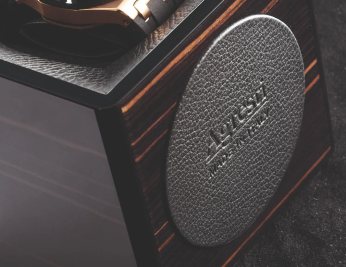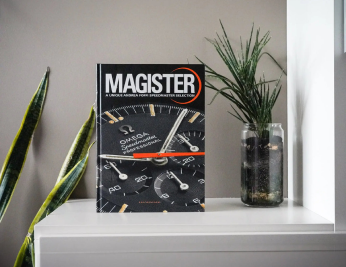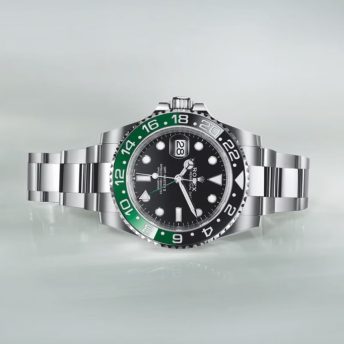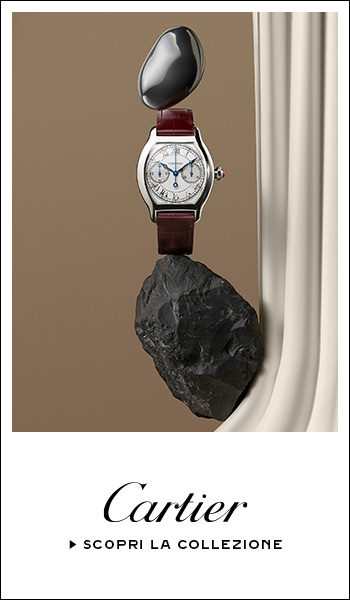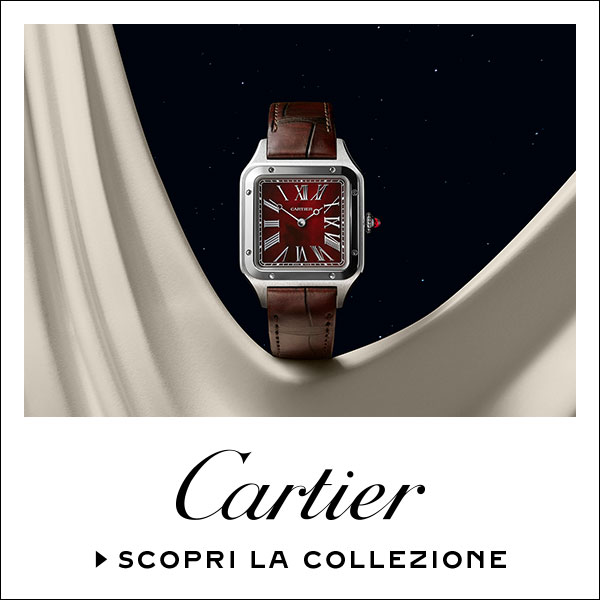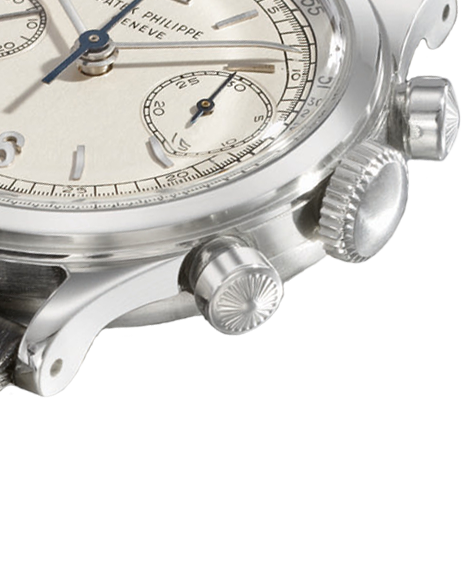Today on IWS, we want to talk to you guys about a watch which, by and large, wrote an entire chapter in the history of horology: the legendary Patek Philippe ref 1463 “Tasti Tondi”.
We Italians have somewhat of an underappreciated influence in the watch market, particularly in the vintage world. In fact, still unbeknowest to many, quite a few recognisable characteristic watch terms have come from our language, like: “Ovettone”, “Padellone”, “Tasti Tondi”, and many more.
There is so much to talk about when it comes to the reference 1463, that we could probably write an entire book on it (which, by the way, would you guys like to see physical print when it comes to IWS? Let us know!), but let’s try and see if we can condense it into a very comprehensive article. Let’s go!
The History
As with many other iconic watches in history, we need to discuss its roots, and look at its predecessors before we jump in to the main attraction. So, before we talk about the Patek Philippe Tasti Tondi, let’s travel back to the first couple of references which came before it – of which there were 2 – both with rectangular “square” pushers.
The ref. 130
The first watch that bore any resemblance to the Tasti Tondi was the ref. 130 chronograph. This watch represented quite a significant milestone for Patek Philippe, as it was one of their very first wristwatches to be equipped with the chronograph complication: all chronographs before it were in the form of pocket watches.
Measuring 33mm across, the ref. 130 was most commonly encased in yellow gold, with some steel versions here and there, and very few versions with a rose gold case. Equally as rare are the steel-gold cased configurations.
Quite often, when it comes to the ref. 130, you’ll hear some mention of Staybrite Steel… but don’t worry about that for now, we’ll get to it in a bit.
This model, which laid the foundations for the Tasti Tondi, was in production until the end of the 1960s.
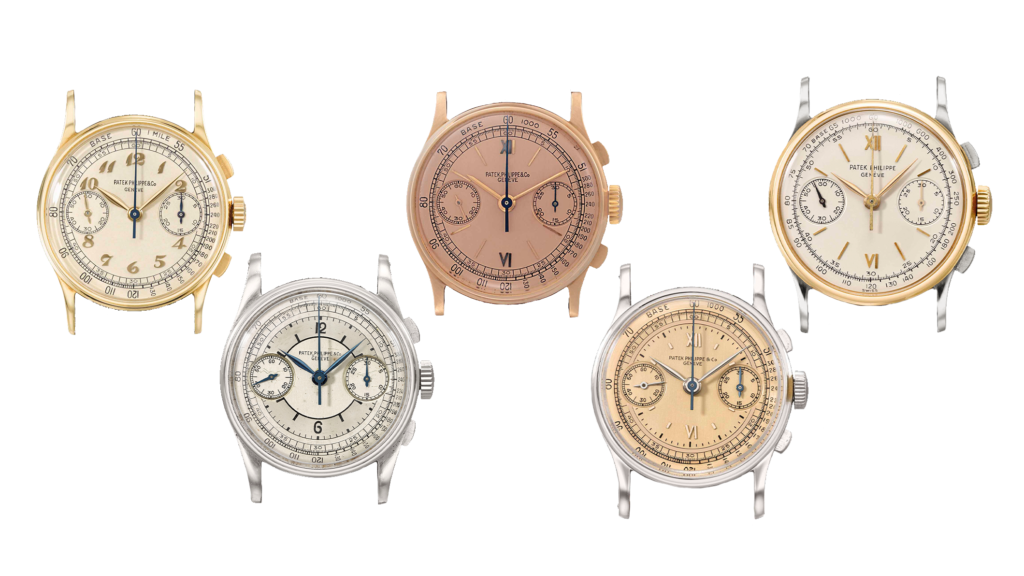
The ref. 530
Going down a step in the family tree, we have the ref. 530: this second generation is often seen as the one that perfectly bridges the gap between the ref. 130 and the 1463, which would then go on to be the Tasti Tondi.
The case is significantly and very noticeably larger: 36.5mm to be exact. Production ratios were kind of similar to those of its predecessor, in that yellow gold case version was by far the most popular one, with steel in second, and rose gold always being the rarest of the rare when it came to this reference (just 2! One with an “Astrua Torino” double signature, and the other from “Gobbi Milano”).
This reference was introduced in 1937, but production lasted only until 1944, so not as long as the ref. 130. One interesting thing to note about this model was that it wasn’t originally designed (nor made) as a chronograph: some of the earliest versions did not feature the famed complication, so if you ever come across a time-only 530, fear not! In fact, count your blessings!
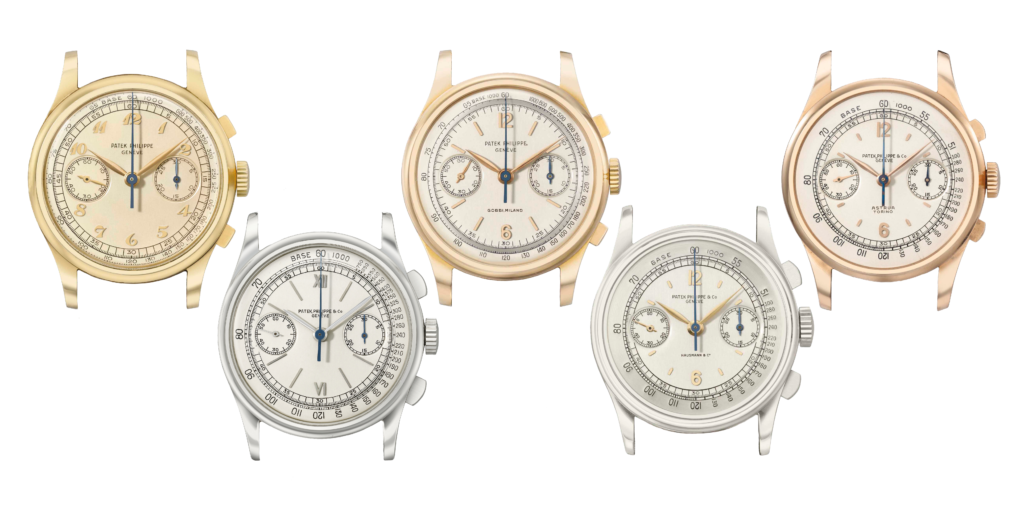
One last bit of trivia before we get onto the main event: other than having two different complications for the same reference number, the lug width was also varied: the yellow gold versions, and those in steel, had lug widths which could range between 19mm and 21.5mm. The rose gold versions were all (well, all two of them) had a fixed width of 19mm.
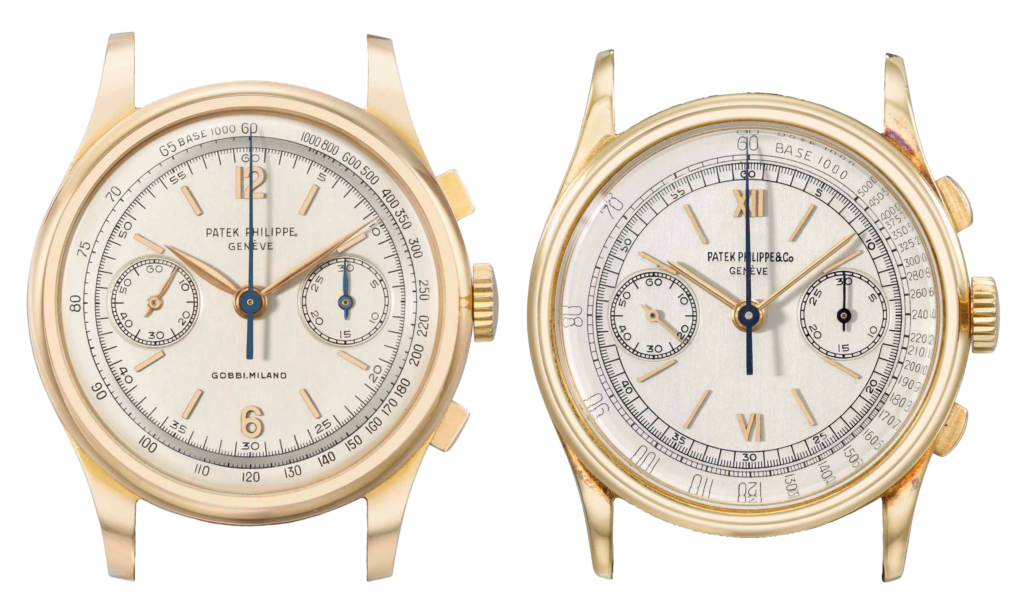
(Sometimes, people find it difficult to tell the difference between a ref. 130 (left) and a 530 (right). One quick trick? The 530 has a far bigger case and therefore presence on the wrist)
The birth of the Patek Philippe “Tasti Tondi” ref 1463
Now that we’ve understood its lineage, let’s take a look at the main feature of the article: the Patek Philippe Tasti Tondi.
In 1940, when the ref. 1463 was introduced, it brought about one (well, really, two, as we will see) fundamental milestones in Patek Philippe’s manufacturing history: it was the brand’s first fully waterproof chronograph… and its only one until 2018, for that matter. This model remained in production until 1965.
(however, it wasn’t Patek’s first ever waterproof watch! This title is reserved for a very special model, which we wrote about here)
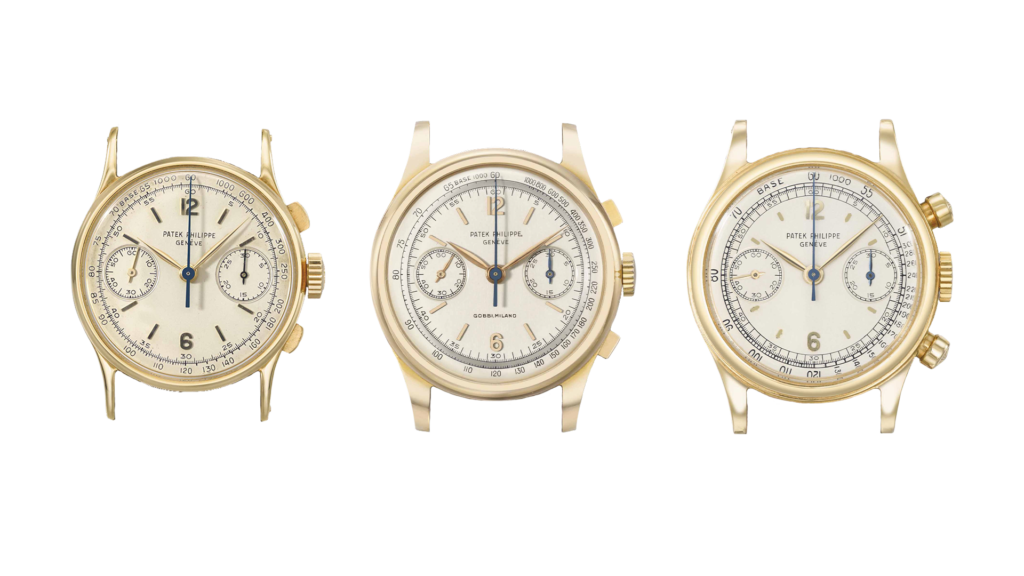
Why is it so difficult to manufacture waterproof chronographs? It’s all in the pushers, the crown is pretty easy!
The chronograph pushers of the previous iterations were nowhere near water-resistant, both for their geometry, design, and assembly. In order to render them waterproof, the pushers needed to be more stout and solid, exactly as those of the 1463 Tasti Tondi.
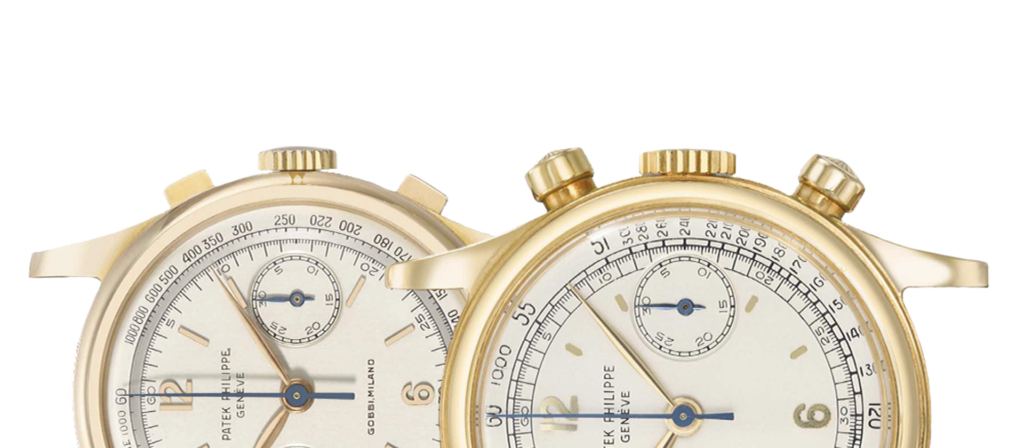
Just as a small aside on the dimensions of the cases: as we mentioned before, the ref. 130 measured 33mm across, whilst the 530, 36.5. The Tasti Tondi’s case is a happy medium of 35mm, and wears really well.
How can you spot a Tasti Tondi?
The most recognisable and identifiable feature of a Tasti Tondi is the fluted surface finishing applied to the pushers, which serve an “anti-slip” purpose. As well as this, they are noticeably larger than the regular and smooth ones.
One super important thing to be aware of: Patek has also employed this fluted finish to the pushers of their modern chronographs, but they are not to be considered as “Tasti Tondi”, as we will explain in the next section. Have a look at some of the modern iterations of this “anti-slip” surface finishing technique:
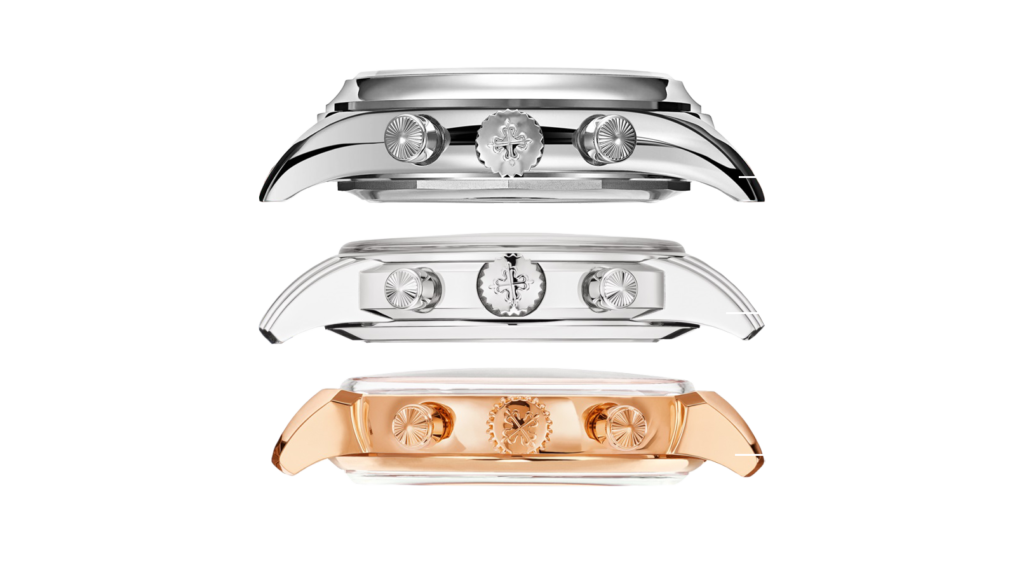
The Tasti Tondi references
The only two references which contain the famous “Tasti Tondi” are the ref. 1463 and the 1563: also the only two waterproof chronographs offered by the Genèvese watchmaker at the time (and for a very long time, at that). Within the ref. 1463, scholars agree that only 750 exemplars were made, most of which were made from yellow gold, and only 190 in rose gold (much more sought-after).
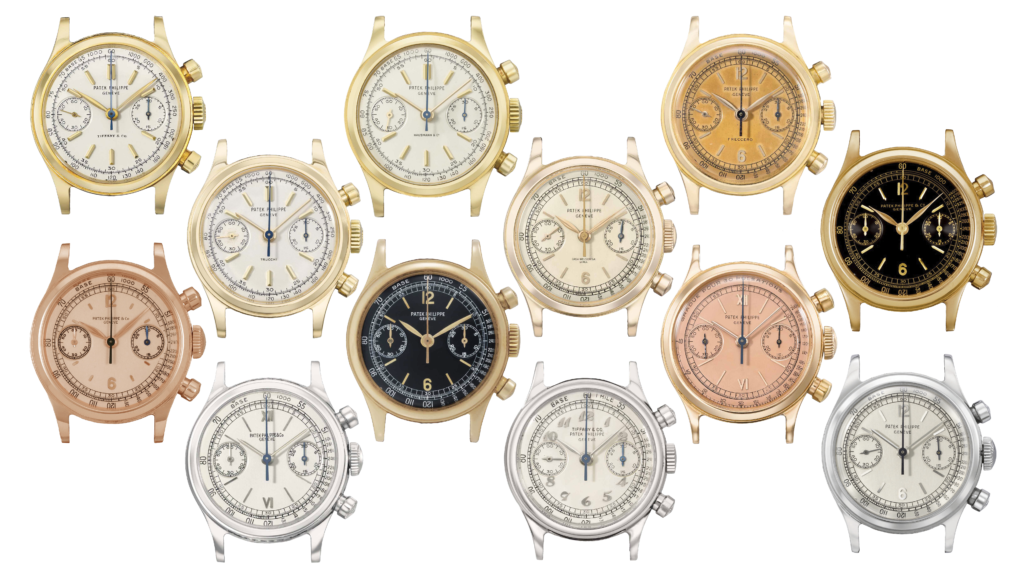
At first glance, a lot of these configurations (apart from dial colours) may look very similar to one another, but when you take a closer look, you can notice some distinct differences. The most common configuration is that of a white/cream coloured dial, long “stick” hour markers, and either Roman or Arabic 12 and 6 numerals.
Other configurations include shorter hour markers with numerals; long indices but no numerals; Breguet numerals; or golden “dots”.
Our absolute favourite, however is this one: a rose gold case; salmon coloured dial; Roman numerals (12-6); and a pulsometric scale. The type of case metal alone is incredibly rare, but this colour, index and scale combination is really just something else…
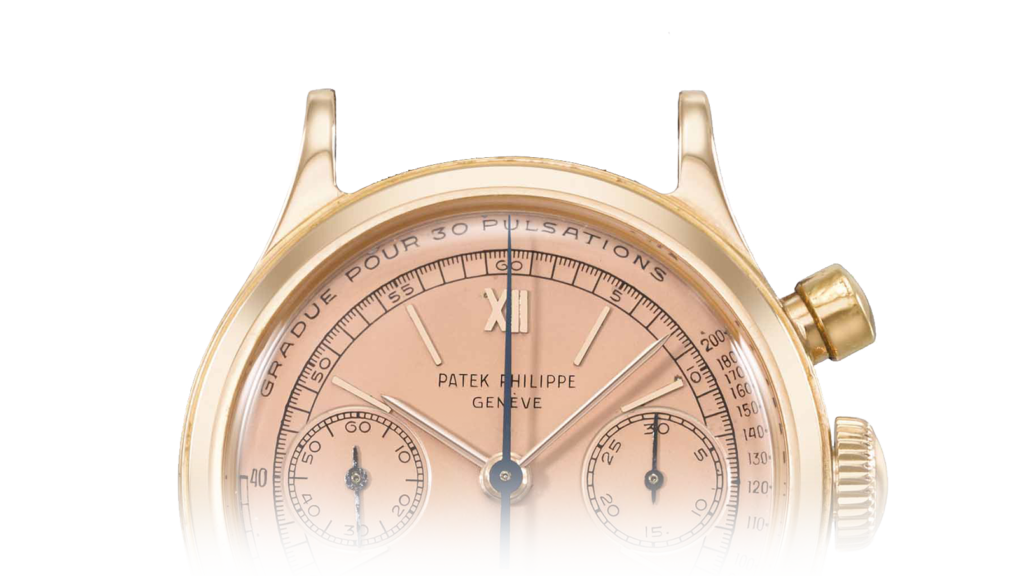
A rare breed: the ref. 1563
Up until now, we know of only 3 ones in existence, and once upon a time, they used to belong to two lucky individuals: Duke Ellington and Jean-Claude Biver. Aesthetically speaking, the two references (1463 & 1563) are identical, with the only modification coming in the form of an additional rattrapante function – most commonly referred to as a “split-seconds“.
We only have two photos of those auctioned by Christie’s, as the third exemplar resides in the Patek Philippe Museum in Geneva. The rarity of these 3 watches really cannot be overstated, yet one just slightly edges the other two: one of the ones owned by JC Biver features a pulsometric scale.
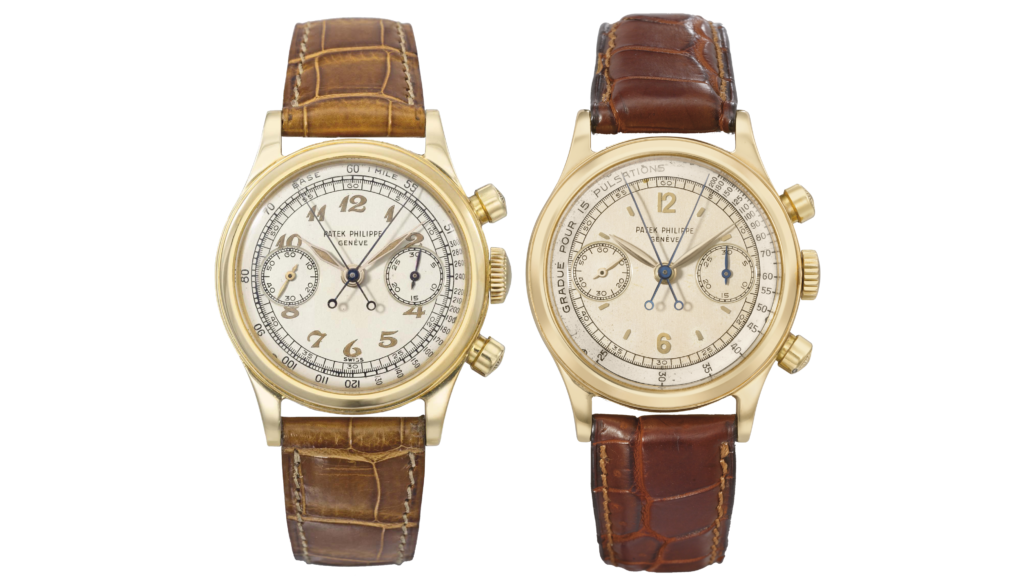
Tasti Tondi on the Aftermarket:
Ref. 1463
When it comes to the 1463, the aftermarket prices have been somewhat stable over the past few decades or so when taking inflation into account. Back in 2002, Antiquorum auctioned a steel 1463 with Breguet numerals for around €200,000 , a yellow gold counterpart for €140,000 , and a rose gold verison for €250,000 .
Although on the whole, the price has remained roughly the same, there have been some outliers over the years which have really underperformed, especially given the rarity of their configuration. For example, a steel version with 12-6 Breguet numerals sold for little over €160,000 .
More recently, the steel versions have attained auction prices to the tune of €300,000 to €600,000 .
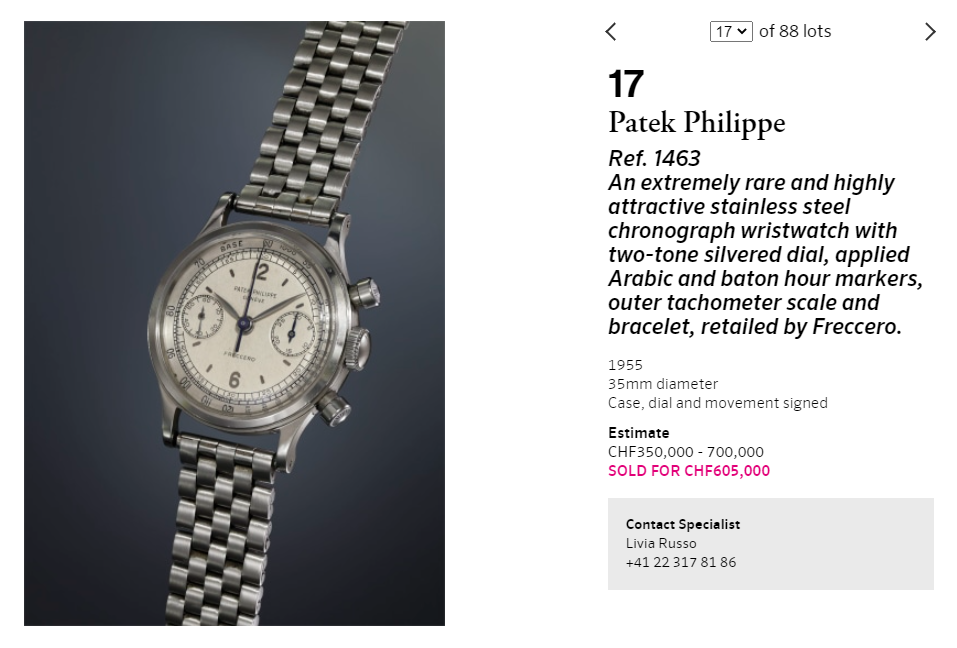
Geneva Auction 14 May 2016
Rose gold prices vary range between €180,000 and €350,000

31 OCTOBER 2020 | MONACO
Last, but in this case, actually least, we have the yellow gold 1463. This is indeed the least desirable out of the three (I think that’s the first and only time I will ever characterise a Patek Philippe as undesirable…), simply because of the fact that it was the least rare. It was the most common material because that was just the standard at the time, right up until the advent of steel.
Currently, the market price of a yellow gold 1463 sits between €100,000-250,000 .

Just as a disclaimer: the figures that we have given above are obviously estimate prices (and applicable to the date of this article). There are multiple factors which influence a watch’s aftermarket value, so there is a good chance that the figures are different at the time of you reading this.
Ref. 1563
The first-ever made 1563 was bought back by the manufacturer in 2002 for the price of $1,593,396 USD, and, as mentioned previously, proudly sits in the Patek Philippe Museum in Geneva.
On the other hand, the other two were both auctioned by Christie’s. The first one to go to the famed auction block was the bi-tonal dialled version featuring a pulsometric scale.
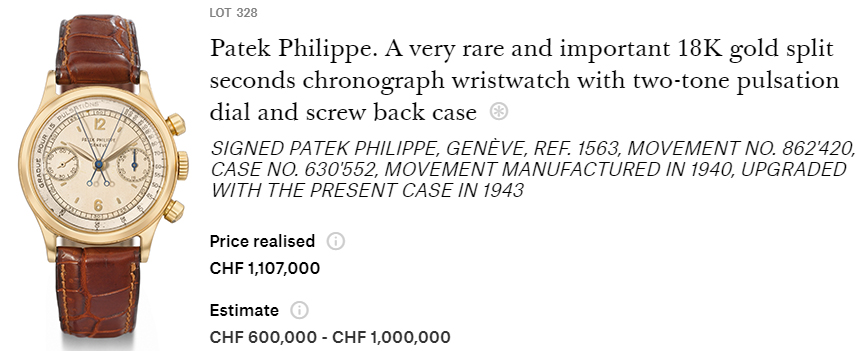
The second one displayed Breguet numerals and tritium-filled hands.
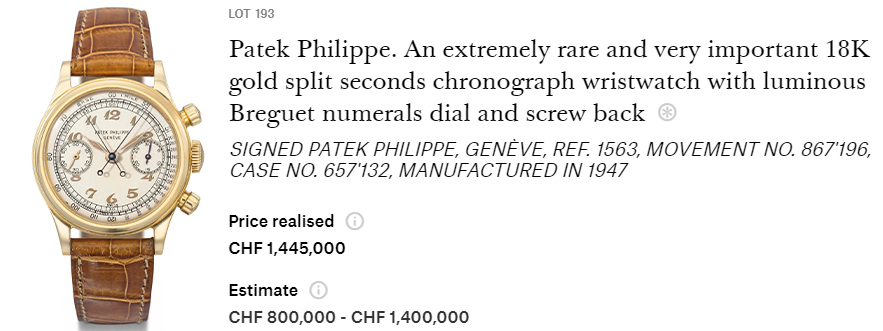
The third time a 1563 appeared at an auction was in 2014, 4 years after JC Biver bought it in the aforementioned 2010 auction.
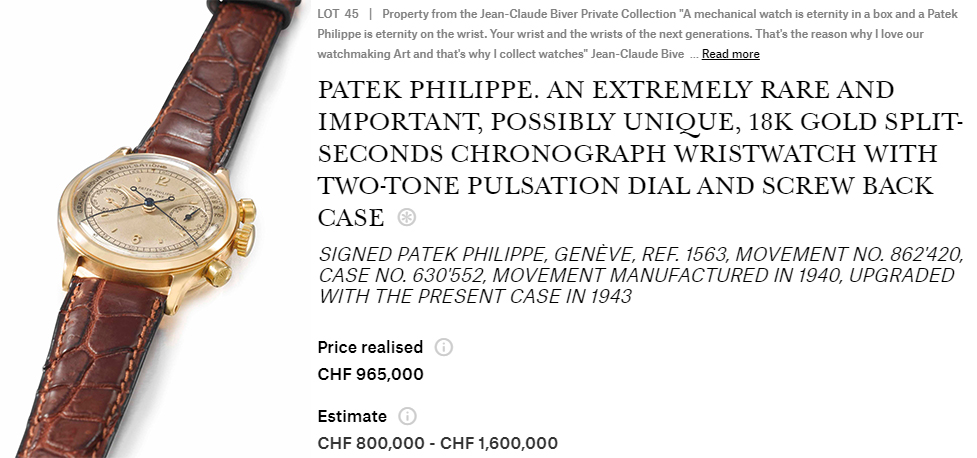
The rarest variants of the Tasti Tondi
The following photos feature some of the rarest and most sought-after configurations of the already iconic Tasti Tondi ref. 1463. Putting case metals aside, there are some really fascinating peculiarities that can be found within this model.
One example is the presence of tritium as a luminous material for the hands and/or indices. Whereas in more modern times it’s very common, back then, this was a really rare occurrence.
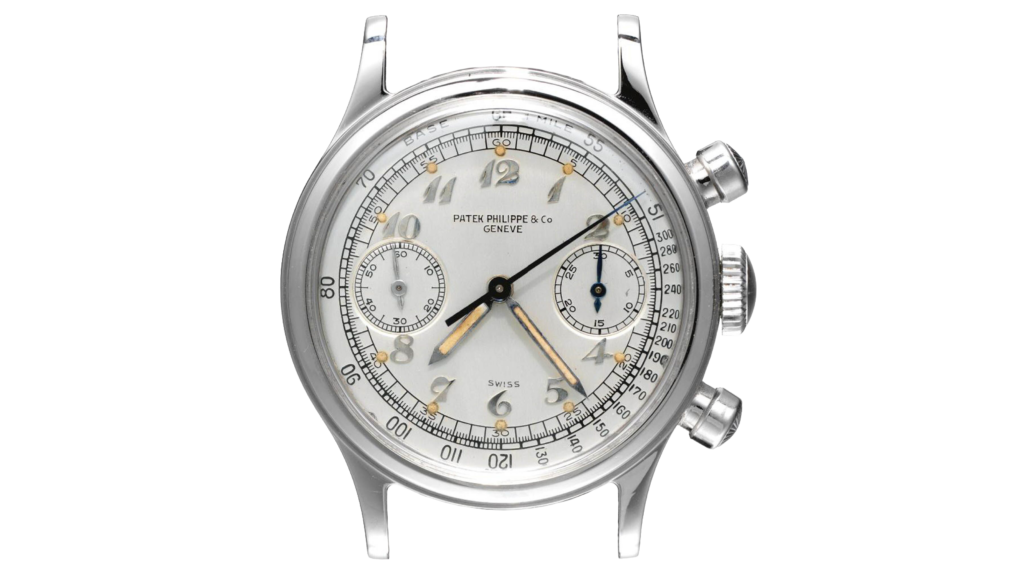
As seen in the pictures further up in the article, the black dial versions of the 1463 Tasti Tondi are very much sought-after.
Another very rare variant when it comes to dials are those which have a double signature from a historic Patek Authorised Dealer: Tiffany & Co of New York, Hausmann of Rome, Casa Welsh of Lima, Trucchi of Naples, Freccero of Montevideo…
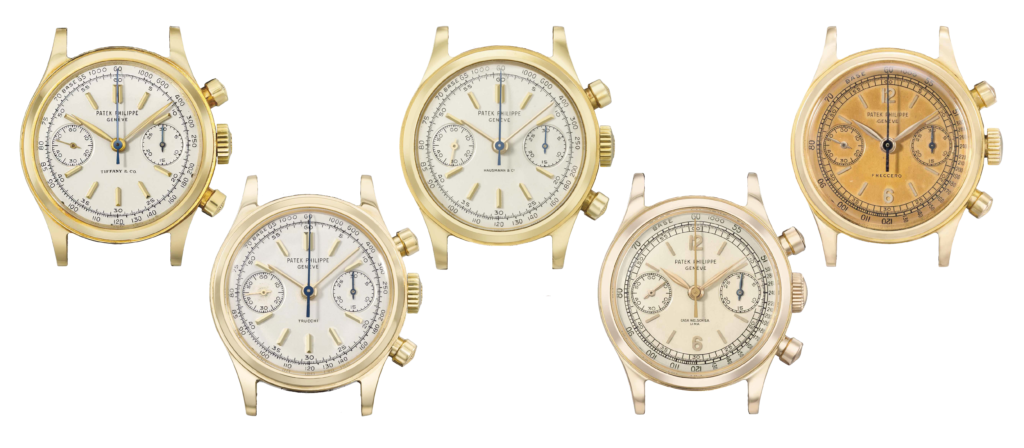
The final ultra-rare configurations of the 1463s are those which were delivered on a metal bracelet. But, these weren’t any ordinary bracelet – they were made by the most renowned bracelet-maker of all time: Gay Freres. This man was responsible for the design and manufacture of some of the most iconic and recognisable bracelets in the history of watchmaking. His résumé includes the bracelets of the Royal Oak, the Nautilus and the classic Rolex Oyster bracelet.
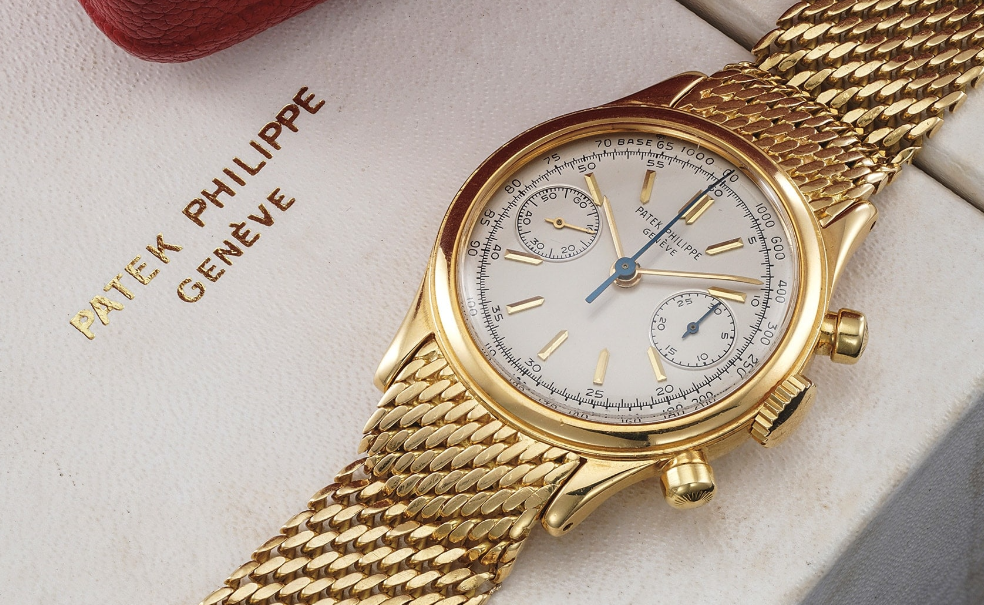
How do we know that it’s an authentic original Gay Freres creation? Check the clasp, and look for the “G F”!
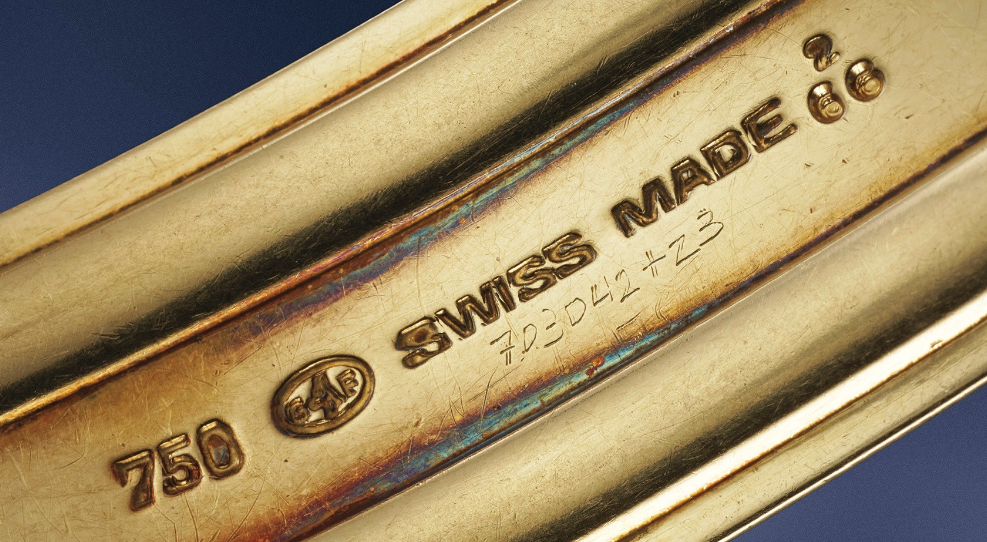
All the photos used in this article belong to the respective auction houses, whom are appropriately credited.
-Translated by Patrick R.

